Introduction
The development of 4th Generation Fighters in DCS World between the 1970s and 1990s marked a significant leap in aviation technology, integrating advanced aerodynamics, fly-by-wire controls, and multirole capabilities.
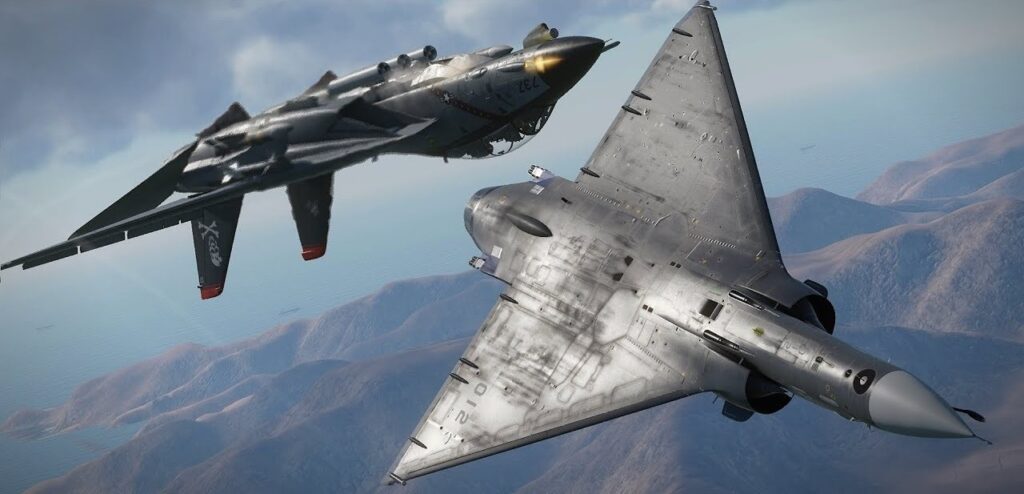
These aircraft introduced a new era of manoeuvrability, energy management, and situational awareness.
In DCS World, these fighters are meticulously modelled to provide an authentic simulation of their real-world counterparts. This article provides a deep dive into the currently available and upcoming 4th – 4.5 generation fighter modules in DCS World.
We will examine their historical background, technical performance, and best employment strategies in Basic Fighter Manoeuvres (BFM).
Additionally, we will include comparative performance charts similar to those from our previous Cold War fighter analysis, along with detailed sustained and instantaneous turn rate speed bands to provide a complete performance breakdown.
Overview of 4th Generation Fighters in DCS World
F-14 Tomcat
History: The Grumman F-14 Tomcat 4th Generation Fighters in DCS World was developed in the late 1960s as a long-range fleet defence fighter for the U.S. Navy. Entering service in 1974, the F-14 was designed to counter Soviet bomber and cruise missile threats with its powerful AN/AWG-9 radar and AIM-54 Phoenix missiles.
Its variable-sweep wing design gave it a unique blend of high-speed performance and low-speed manoeuvrability, making it one of the most versatile air superiority fighters of its era.
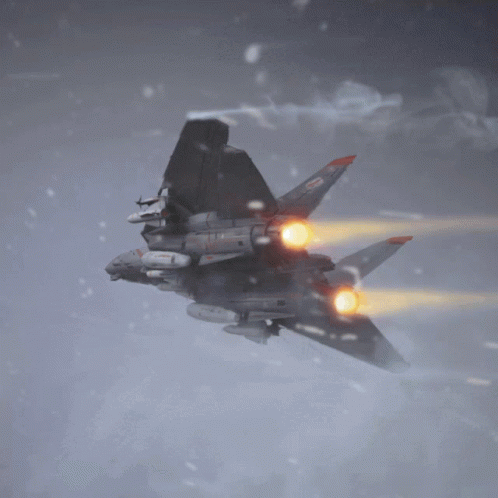
The F-14 Tomcat has a notable combat history, primarily distinguished by its service with both the U.S. Navy and the Islamic Republic of Iran Air Force (IRIAF).
U.S. Navy Service:
- Total Air-to-Air Kills: 5 confirmed
- 1981 Gulf of Sidra Incident: Two F-14s from VF-41 squadron engaged and shot down two Libyan Su-22 fighters.
- 1989 Gulf of Sidra Incident: Two F-14s from VF-32 squadron intercepted and destroyed two Libyan MiG-23 fighters.
- 1991 Gulf War: An F-14 achieved a single air-to-air kill by downing an Iraqi Mi-8 helicopter.
Iranian Service:
- Total Air-to-Air Kills: Iranian sources claim up to 159 aerial victories during the Iran-Iraq War in the 1980s. However, independent verification confirms approximately 55 of these kills.
It’s important to note that while the F-14 was a formidable platform, its limited engagement opportunities under U.S. service contrast with its extensive combat use by Iran.
The disparity in reported kill numbers highlights the challenges in verifying combat claims, especially from different sources and contexts.
- Top Speed: Mach 2.34 at altitude
- Variable-sweep wings optimize performance across different speed regimes
- Powerful TF30 (early) / F110 (later) engines provide strong acceleration and climb rates
- AN/AWG-9 radar with AIM-54 Phoenix missiles allows for unmatched long-range air combat capabilities
BFM Employment: The F-14 Tomcat is a dual-nature fighter, capable of both one-circle and two-circle engagements, depending on speed and energy state.
Its large control surfaces and glove vanes give it excellent instantaneous turn capability, making it highly competitive in one-circle fights when flown at lower speeds.
However, its high weight and drag penalty mean that sustained turn performance is weaker than that of aircraft like the F-15C or F-16C.
When properly managed, the F-14 excels in vertical fights, using its thrust-to-weight ratio to out-climb and out-manoeuvre opponents.
| Weapon | Type | Range (Publicly Disclosed) |
|---|---|---|
| Short-Range Air-to-Air Missiles (WVR) | ||
| AIM-9L | IR-guided (heat-seeking) | ~10 nm (18 km) |
| AIM-9M | IR-guided (heat-seeking) | ~11 nm (20 km) |
| Medium-Range Air-to-Air Missiles (BVR) | ||
| AIM-7F | Semi-active radar-guided | ~30-40 nm (55-75 km) |
| AIM-7M | Semi-active radar-guided | ~35-45 nm (65-83 km) |
| Long-Range Air-to-Air Missiles (BVR) | ||
| AIM-54A Mk47 | Active radar-guided (ARH) | ~60-80 nm (111-148 km) |
| AIM-54A Mk60 | Active radar-guided (ARH) | ~80-100 nm (148-185 km) |
| AIM-54C Mk47 | Active radar-guided (ARH) | ~80-100 nm (148-185 km) |
| Long-Range Air-to-Air Missiles (Not Available in DCS) | ||
| AIM-120D* (F-14D) | Active radar-guided (ARH) | ~80-100 nm (150-185 km) (Not in DCS) |
Note: The maximum ranges listed are approximate and can vary based on factors such as launch conditions, target maneuvers, and specific missile variants.
Flying Tips:
- Avoid prolonged turning fights against lightweight, high-sustained-turn-rate fighters like the F-16 and Mirage 2000C.
- Use one-circle engagements at lower speeds, leveraging its instantaneous turn rate.
- Keep energy high when possible, as the F-14 bleeds speed quickly in sustained turns.
- Utilize vertical maneuvers to exploit its powerful engines and wing sweep transitions.
- Be mindful of engine management in the early TF30-powered F-14A, as high AoA maneuvering can lead to compressor stalls.
The F-14 Tomcat in DCS World is one of the most challenging yet rewarding fighters to master. Its powerful radar, long-range missiles, and variable-sweep wing dynamics provide a unique and highly tactical dogfighting experience.
A well-flown Tomcat remains a deadly adversary, especially when paired with an experienced Radar Intercept Officer (RIO) utilizing its advanced sensor suite to control the air battle.
F-15C Eagle
History: The McDonnell Douglas (now Boeing) F-15C Eagle 4th generation fighters in DCS World is an all-weather air superiority fighter that first entered service with the United States Air Force in 1976.
Designed as a response to the Soviet MiG-25 Foxbat, the Eagle was built around the principles of speed, power, and unmatched aerial dominance. With over 100 confirmed combat kills and zero losses in air-to-air combat, the F-15C remains one of the most successful fighter aircraft in history.
Its advanced AN/APG-63 radar, coupled with high-thrust engines and exceptional manoeuvrability, makes it a formidable adversary in modern air combat.
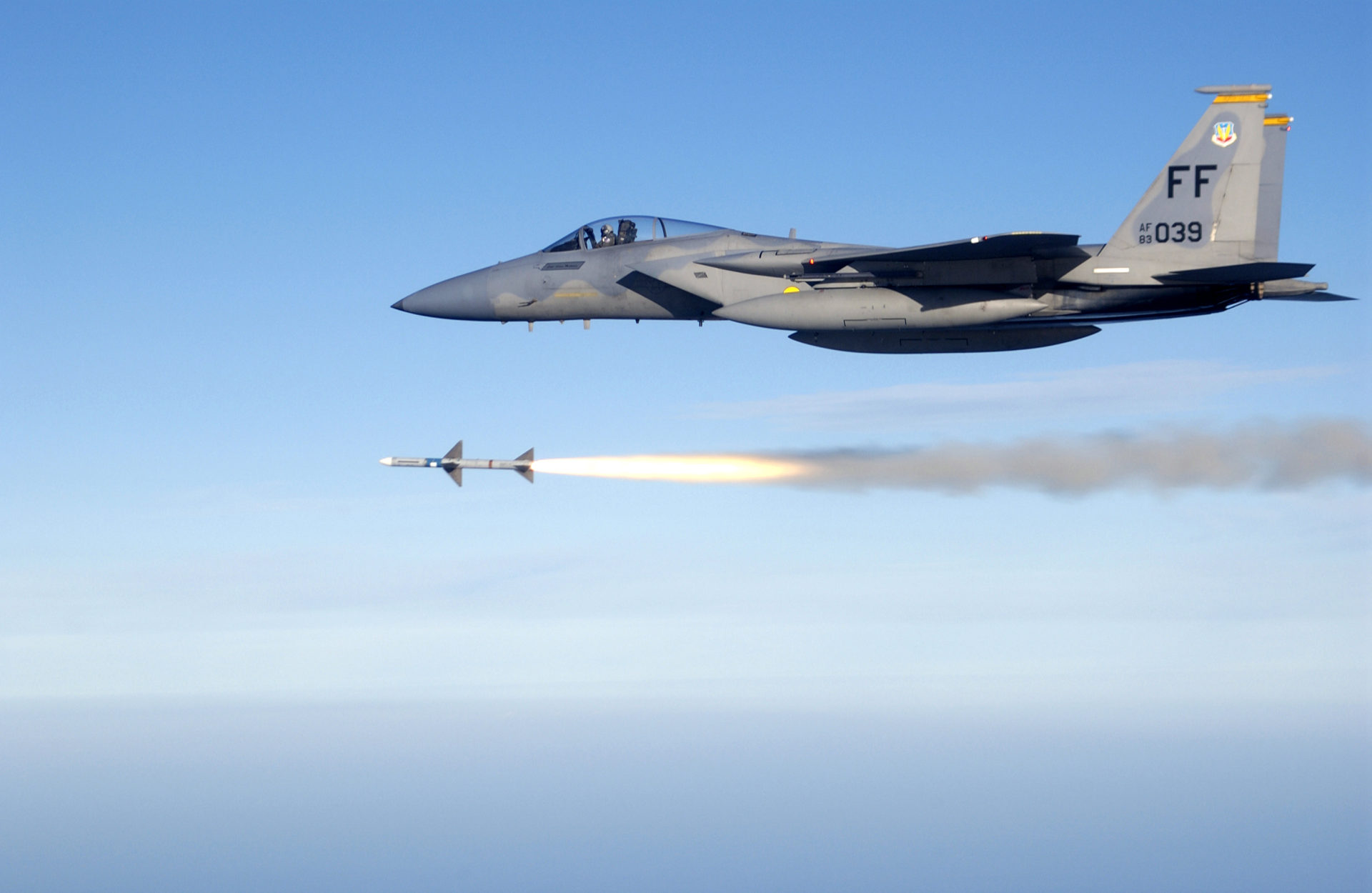
The F-15C Eagle has an impressive combat record, particularly with the U.S. Air Force (USAF) and the Israeli Air Force (IAF).
U.S. Air Force:
- Total Air-to-Air Kills: The USAF F-15C fleet has achieved over 100 aerial victories without any losses in air-to-air combat.
Israeli Air Force:
- Total Air-to-Air Kills: The IAF’s F-15s, known locally as “Baz,” have claimed numerous aerial victories. Notably, on June 27, 1979, IAF ace Moshe Melnik secured the F-15’s first-ever kill by downing a Syrian MiG-21 using an Israeli-made Python 3 missile.
- In the same engagement, pilot Eitan Ben-Eliyahu achieved the aircraft’s first gun kill. During subsequent operations over Lebanon from 1979 to 1981, IAF F-15s downed more than a dozen Syrian MiG-21s and at least two MiG-25s.
Other Operators:
- Royal Saudi Air Force (RSAF): The RSAF has also operated F-15C/D variants. During the Gulf War in 1991, RSAF F-15s achieved aerial victories, including the downing of Iraqi aircraft.
Overall, the F-15C Eagle boasts a remarkable air combat record, with operators collectively achieving over 100 confirmed aerial victories without a single loss in air-to-air combat.
Performance:
- Top Speed: Mach 2.5+ at altitude
- Thrust-to-Weight Ratio: ~1.15 when lightly loaded
- Best-in-class acceleration and climb rate
- Lacks fly-by-wire, requiring careful energy management
BFM Employment: The F-15C Eagle is a two-circle fighter by nature, leveraging its high-speed manoeuvrability and sustained turn rate to dominate prolonged engagements.
However, its instantaneous turn rate is also competitive, allowing it to force a nose-on aspect in a one-circle fight when necessary. Against agile high-AoA fighters like the F/A-18C or Mirage 2000C, it is crucial to avoid slow-speed fights and instead maintain superior energy and positional control.
| Weapon System | Type | Maximum Range |
|---|---|---|
| M61A1 Vulcan | Internal 20mm Gatling Gun | Effective up to ~2,000 feet (0.6 kilometers) |
| AIM-7 Sparrow | Semi-Active Radar Homing Missile | Approximately 70 kilometers |
| AIM-9 Sidewinder | Infrared-Guided Short-Range Missile | Approximately 35 kilometers |
| AIM-120 AMRAAM | Active Radar Homing Missile | Up to 180 kilometers (AIM-120C-8 variant) citeturn0search0 |
Note: The maximum ranges listed are approximate and can vary based on factors such as launch conditions, target maneuvers, and specific missile variants.
Flying Tips:
- Keep fights above 400 knots to maintain high-energy manoeuvrability.
- Utilize vertical manoeuvring to exploit its superior thrust-to-weight ratio.
- Avoid slow-speed high-AoA engagements, as aircraft like the Hornet or Flanker will have better nose authority.
- Use high-speed two-circle engagements to grind down opponents with superior energy retention.
- The Eagle’s radar and AIM-120 AMRAAM missiles make it a deadly beyond-visual-range (BVR) fighter, so engaging at range is often preferable.
The F-15C in DCS World rewards pilots who understand energy management, positional awareness, and speed control. While it lacks modern helmet-mounted sights (HMDs) and high off-boresight missiles, its raw performance and BVR capabilities make it a dominant force when used correctly.
F-16C Viper
History: The General Dynamics F-16 Fighting Falcon is a 4th generation fighters in DCS World, commonly called the “Viper,” was developed for the United States Air Force in the late 1970s.
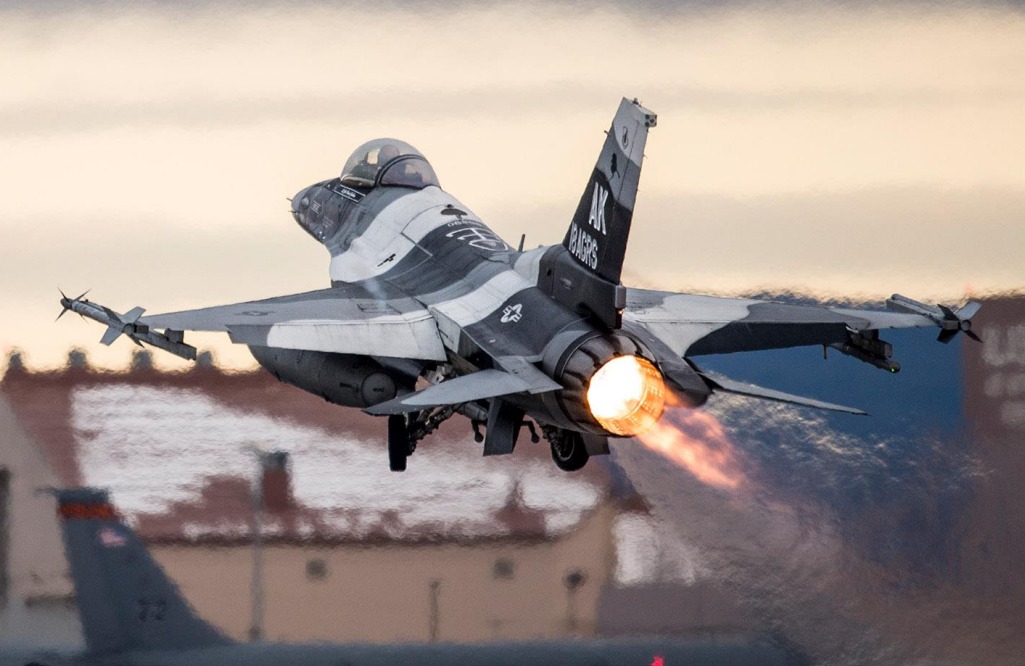
Originally designed as a lightweight day fighter, the F-16 evolved into a versatile multirole platform with exceptional performance. Its lightweight airframe, powerful F110-GE-129 engine, and advanced avionics made it one of the most widely used fighters in the world.
Nations around the globe continue to operate the F-16 in various configurations, proving its longevity and adaptability.
The F-16 Fighting Falcon, commonly known as the “Viper,” has an extensive combat record across multiple air forces worldwide. Since its introduction in the late 1970s, the F-16 has participated in numerous conflicts, demonstrating its versatility and effectiveness in both air-to-air and air-to-ground roles.
Air-to-Air Combat Record:
- Total Confirmed Kills: Approximately 210 confirmed aerial victories.
- Combat Losses: Two confirmed losses in air-to-air engagements.
- Fratricides: Four incidents of friendly fire.
Notable Operators and Engagements:
- Israeli Air Force (IAF): The IAF was the first to employ the F-16 in combat, achieving its initial air-to-air kills in April 1981 by downing two Syrian Mi-8 helicopters. Throughout the 1980s, Israeli F-16s were credited with numerous aerial victories, including engagements during operations over Lebanon.
- Pakistan Air Force (PAF): Between 1986 and 1990, PAF F-16s engaged Soviet and Afghan aircraft, claiming several kills, including Su-22 fighter-bombers and An-26 transport planes. These operations underscored the F-16’s capabilities in diverse combat scenarios.
- U.S. Air Force (USAF): The F-16 saw extensive action during Operation Desert Storm in 1991, conducting numerous sorties against Iraqi targets. In subsequent operations, USAF F-16s achieved air-to-air kills, including the downing of an Iraqi MiG-29 in January 1993.
The F-16’s impressive kill-to-loss ratio and its widespread adoption by air forces globally highlight its status as a formidable multirole fighter aircraft.
Performance:
- Top Speed: Mach 2.05 at altitude
- Thrust-to-Weight Ratio: ~1.1 when lightly loaded
- Exceptional energy retention and high roll rate
BFM Employment: The F-16C is an energy fighter that excels in two-circle engagements, where its high sustained turn rate gives it an advantage. It can also perform well in one-circle fights, using its superior pitch rate to force an overshoot if needed.
However, against fighters with extreme high-alpha capability, such as the F/A-18C, the Viper needs to avoid slow-speed engagements.
Here’s a categorized table of Air-to-Air Weapons for the F-16 in DCS World, along with their publicly disclosed ranges:
| Weapon | Type | Range (Publicly Disclosed) |
|---|---|---|
| Short-Range Air-to-Air Missiles (WVR) | ||
| AIM-9M | IR-guided (heat-seeking) | ~11 nm (20 km) |
| AIM-9X | IR-guided (high off-boresight) | ~12 nm (22 km) |
| Medium-Range Air-to-Air Missiles (BVR) | ||
| AIM-120B | Active radar-guided | ~30–40 nm (55–75 km) |
| AIM-120C-5 | Active radar-guided | ~40–50 nm (75–92 km) |
| AIM-120C-7 | Active radar-guided | ~50–60 nm (92–111 km) |
| Long-Range Air-to-Air Missiles (BVR – Not Available in DCS) | ||
| AIM-120D* | Active radar-guided | ~80–100 nm (150–185 km) (Not in DCS) |
Notes:
- Ranges depend on launch conditions (altitude, speed, and target aspect).
- AIM-120D is not currently in DCS but is listed for reference.
- Gun option: The M61 Vulcan 20mm cannon is available for ultra-close-range combat.
Would you like a similar table for another aircraft in DCS?
Flying Tips:
- Maintain high-speed fights (400-500 knots) to capitalize on its sustained turn rate.
- Avoid low-speed high-AoA fights against aircraft with superior nose authority.
- Use vertical manoeuvres when possible, as the high thrust-to-weight ratio allows for strong performance in the vertical.
- Engage in rolling scissors if an overshoot occurs, leveraging the F-16’s high roll rate to remain offensive.
F/A-18C Hornet
History: Developed by McDonnell Douglas (now Boeing), the F/A-18C Hornet one of the many 4th generation fighters in DCS World was introduced in the 1980s as a carrier-capable multirole fighter.
It features superb high-alpha performance, an advanced radar system, and robust naval adaptability. Unlike other fighters of its era, the F/A-18 was built to perform a variety of roles, from air superiority to ground attack, making it an indispensable part of the US Navy and Marine Corps.
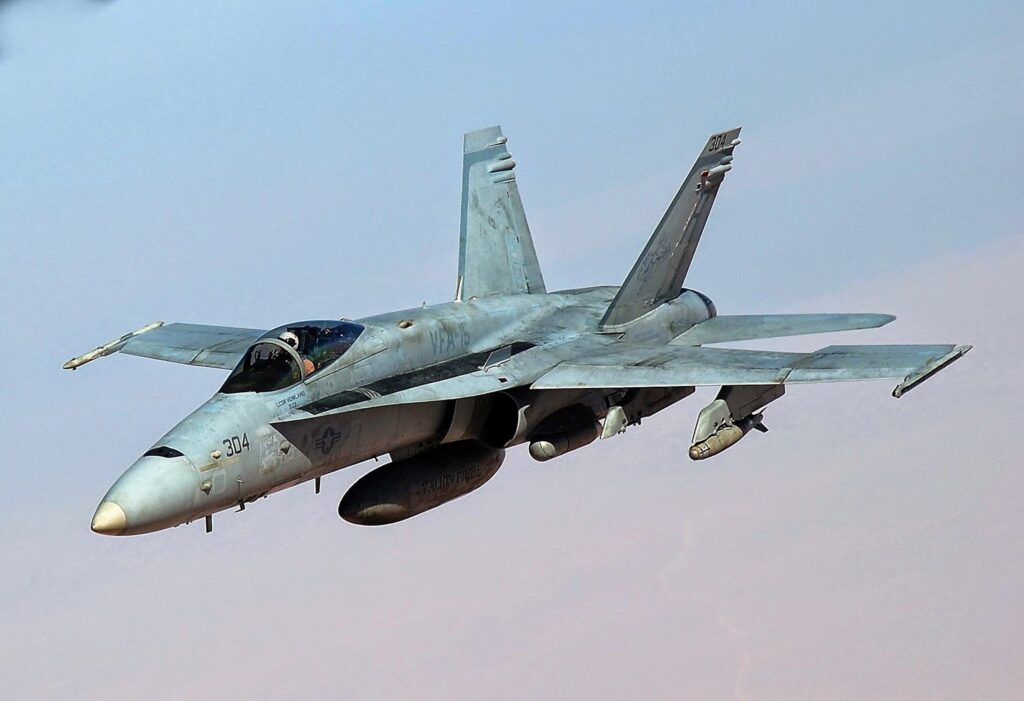
F/A-18 Hornet Combat Record
The F/A-18 Hornet has been extensively used in combat by the U.S. Navy, U.S. Marine Corps, and several allied nations. It has participated in numerous conflicts, demonstrating its versatility in both air-to-air and air-to-ground missions.
Notably the F-18 Hornet during Desert Storm was the first fighter in history to have shot down enemy aircraft in an air to air engagement while still carrying its bombs. Yes, it killed some MIGS then went and bombed it’s primary target! A World First!
Air-to-Air Kills and Losses:
Operation Desert Storm (1991): The F/A-18C scored two aerial kills against Iraqi MiG-21s using AIM-7 Sparrow missiles while on a strike mission.
Operation Southern Watch & Northern Watch (1990s-2000s): Engaged in multiple air patrols but did not register air-to-air kills.
Kosovo War (1999): Canadian CF-18 Hornets participated in NATO operations, though no air-to-air kills were recorded.
Gulf War to Present: No confirmed air-to-air losses in combat against enemy fighters. However, F/A-18s have been lost to surface-to-air missiles and accidents.
Air-to-Ground Engagements:
Gulf War (1991): The Hornet played a significant role in SEAD (Suppression of Enemy Air Defences), bombing missions, and close air support.
Operation Enduring Freedom (2001-2014): U.S. Navy and Marine Corps Hornets conducted extensive strike missions in Afghanistan.
Operation Iraqi Freedom (2003-2011): Used for deep strike missions, close air support, and reconnaissance.
Libya (2011, 2019): Participated in NATO airstrikes, targeting ground assets of the Libyan regime.
Ongoing Operations: The Hornet remains active in the fight against insurgent groups and in maritime operations.
Performance:
- Top Speed: Mach 1.8
- Best-in-class high angle-of-attack (AoA) control
- Twin-engine redundancy provides safety and power.
BFM Employment: The Hornet is at its best in one-circle fights, where its ability to maintain high AoA allows it to aggressively point its nose at the enemy and achieve first-shot opportunities.
The aircraft’s digital flight control system ensures excellent handling even at extremely high angles of attack, making it one of the most forgiving aircraft in a dogfight.
Here’s a categorized table of Air-to-Air Weapons for the F/A-18C Hornet in DCS World, along with their publicly disclosed ranges:
| Weapon | Type | Range (Publicly Disclosed) |
|---|---|---|
| Short-Range Air-to-Air Missiles (WVR) | ||
| AIM-9M | IR-guided (heat-seeking) | ~11 nm (20 km) |
| AIM-9X | IR-guided (high off-boresight) | ~12 nm (22 km) |
| Medium-Range Air-to-Air Missiles (BVR) | ||
| AIM-120B | Active radar-guided | ~30–40 nm (55–75 km) |
| AIM-120C-5 | Active radar-guided | ~40–50 nm (75–92 km) |
| AIM-120C-7 | Active radar-guided | ~50–60 nm (92–111 km) |
| Long-Range Air-to-Air Missiles (BVR – Not Available in DCS) | ||
| AIM-120D* | Active radar-guided | ~80–100 nm (150–185 km) (Not in DCS) |
| AIM-54 Phoenix* | Active radar-guided | ~100+ nm (185+ km) (Not used by F/A-18) |
Notes:
- The AIM-120D is not available in DCS but is used by real-world F/A-18s.
- The AIM-54 Phoenix is not compatible with the F/A-18 but is included for reference since it’s often discussed in BVR comparisons.
- The F/A-18C also has the M61 Vulcan 20mm cannon for close-range engagements.
Flying Tips:
- Leverage its high-AoA capabilities to force overshoots and remain offensive.
- Avoid prolonged energy fights against aircraft with better sustained turn rates (e.g., F-16C, MiG-29).
- Use flaps in a dogfight for enhanced control but be mindful of energy bleed.
- Employ rudder-assisted rolling maneuvers to maintain nose authority in close engagements.
Eurofighter Typhoon (Expected in DCS)
History: The Eurofighter Typhoon is a 4th generation fighters in DCS World that is state-of-the-art 4.5-generation multirole fighter developed by a European consortium including the UK, Germany, Italy, and Spain.
Entering service in the early 2000s, it was designed to provide superior air dominance, leveraging advanced aerodynamics, high thrust-to-weight ratio, and cutting-edge avionics. The Typhoon is capable of super cruise, allowing it to maintain supersonic speeds without afterburner, significantly improving combat endurance.
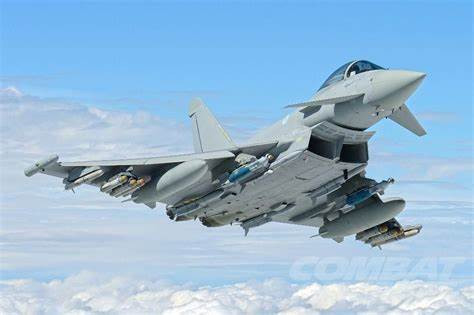
Eurofighter Typhoon Combat History
The Eurofighter Typhoon has participated in multiple combat operations since its introduction, demonstrating its effectiveness in both air-to-air and air-to-ground roles.
- 2011 Military Intervention in Libya: The Typhoon made its combat debut during the 2011 intervention in Libya, where Royal Air Force (RAF) and Italian Air Force Typhoons were deployed for aerial reconnaissance and strike missions. They enforced the no-fly zone and engaged ground targets with precision-guided munitions.
- First Air-to-Air Kill (2021): On December 14, 2021, an RAF Typhoon engaged and destroyed a hostile drone near the Al-Tanf coalition base in Syria. This marked the Typhoon’s first confirmed air-to-air kill, showcasing its advanced sensor suite and missile capabilities in real combat.
- Baltic Air Policing: Eurofighter Typhoons have played a key role in NATO’s Baltic Air Policing mission, intercepting multiple Russian aircraft near NATO airspace. In 2020, RAF Typhoons deployed to Šiauliai Air Base, Lithuania, under Operation Azotize, reinforcing regional air defense.
- Middle East Operations & Drone Interceptions (2024): In January 2024, RAF Typhoons conducted precision airstrikes in Yemen, targeting military facilities used by Houthi forces to launch drone and missile attacks. Typhoons have also been actively involved in intercepting drones over the Red Sea and surrounding regions, though specific kill confirmations remain classified.
- Maritime Strike Capability: In September 2022, a Typhoon from 41 Squadron participated in Exercise Atlantic Thunder, successfully sinking a decommissioned naval target using precision munitions. This marked the first recorded maritime strike by an RAF Typhoon.
- Highway Operations: In September 2023, RAF Typhoons took part in Exercise Baana 23 in Finland, performing landings and takeoffs from a highway in Tervo. This marked the first time a Eurofighter had conducted highway operations, highlighting its adaptability in austere environments.
The Eurofighter Typhoon continues to evolve, with software and hardware upgrades enhancing its sensor fusion, electronic warfare, and missile capabilities, ensuring its continued dominance in modern aerial combat.
Performance:
- Top Speed: Mach 2.0+
- Supercruise Capable (sustained supersonic speed without afterburners)
- High maneuverability with delta-canard design
- Advanced sensor fusion and data linking capabilities
BFM Employment: The Typhoon excels in both one-circle and two-circle engagements, offering superior energy retention and high thrust-to-weight ratio. Its delta-canard configuration provides exceptional nose-pointing ability in low-speed fights while maintaining strong sustained turn performance at high speeds.
Flying Tips:
- Exploit its high-speed capabilities to dominate sustained turn fights.
- Use canard-assisted maneuvering to maximize nose authority in one-circle fights.
- Engage at high speeds to take full advantage of its energy retention and supercruise ability.
With its cutting-edge avionics, high agility, and superior speed, the Eurofighter Typhoon is expected to be one of the most versatile and formidable aircraft in DCS World upon release.
Expected Weapons on the New Module – Subject to change.
| Weapon | Type | Range (Publicly Disclosed) |
|---|---|---|
| Short-Range Air-to-Air Missiles (WVR) | ||
| IRIS-T | IR-guided (heat-seeking) | ~25 km (13.5 nm) |
| AIM-9X | IR-guided (high off-boresight) | ~22 km (12 nm) |
| Medium-Range Air-to-Air Missiles (BVR) | ||
| Meteor | Active radar-guided (ARH) | ~100+ km (62+ nm) |
| AIM-120C | Active radar-guided (ARH) | ~50–60 nm (92–111 km) |
| Long-Range Air-to-Air Missiles (Not Available in DCS) | ||
| AIM-120D* | Active radar-guided (ARH) | ~80–100 nm (150–185 km) (Not in DCS) |
Notes for the Eurofighter Typhoon:
- The Meteor missile is the standout for long-range engagements, with a range over 100 km (62 nm). It uses ramjet propulsion for sustained range and is expected to be available in DCS with the Eurofighter.
- The IRIS-T is an advanced IR-guided missile similar in capability to the AIM-9X but with a focus on high off-boresight targeting.
- The AIM-120D is not currently available in DCS but may be part of the Eurofighter Typhoon’s weapons loadout in the future.
- The Eurofighter Typhoon will likely feature advanced radar systems like the CAPTOR-M or Captor-E AESA, which enable long-range tracking and missile engagement.
MiG-29 Fulcrum
History: The Mikoyan MiG-29 is a 4th generation fighters in DCS World and was developed by the Soviet Union in the 1970s as a high-performance air superiority fighter designed to counter NATO’s F-15 and F-16. Known for its powerful twin engines and excellent maneuverability, the MiG-29 remains in service with multiple air forces around the world.
MiG-29 Fulcrum Combat Record
The Mikoyan MiG-29 Fulcrum, introduced in the early 1980s, has seen extensive service across various air forces worldwide. Designed primarily as an air superiority fighter, its combat record reflects engagements in multiple conflicts.
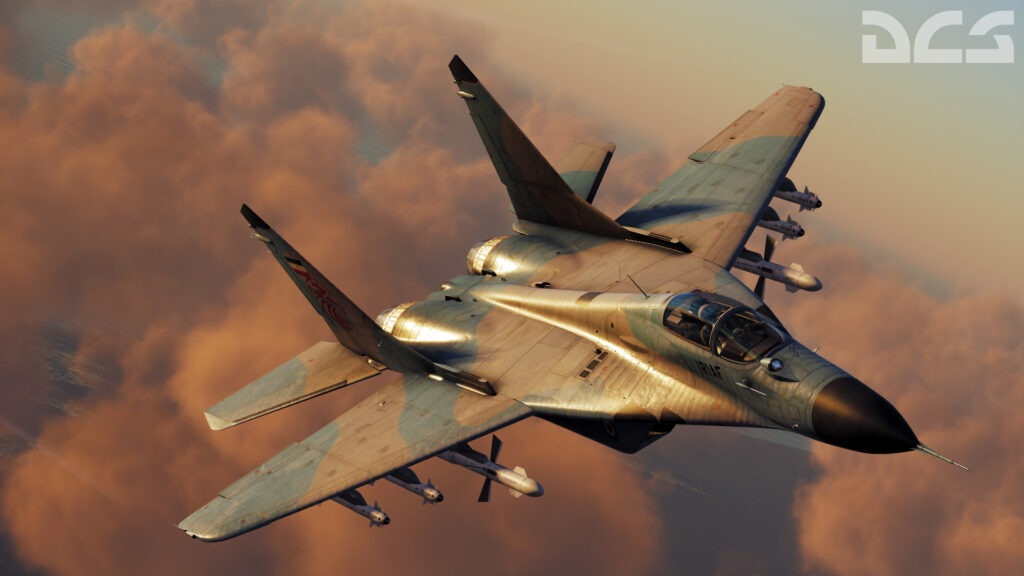
Air-to-Air Victories and Losses:
- Total Air-to-Air Victories: Approximately 6 confirmed kills.
- Total Air-to-Air Losses: At least 18 aircraft lost in aerial combat.
Notably, during the late 1990s conflict over Kosovo, MiG-29s faced off against NATO aircraft. In these engagements, F-16s downed two MiG-29s, while F-15s accounted for three additional kills. citeturn0search0
Air-to-Ground Operations:
While the MiG-29 was primarily designed for air superiority missions, it has been adapted for multirole capabilities, including air-to-ground operations. However, its impact in this role has been limited compared to dedicated ground-attack aircraft.
Specific instances of significant air-to-ground missions by MiG-29s are not well-documented, suggesting that its use in this capacity has been relatively minor.
In summary, the MiG-29 Fulcrum has experienced mixed results in combat. Its air-to-air engagements have resulted in a higher number of losses than victories, and its role in air-to-ground operations has been limited.
Factors such as pilot training, maintenance challenges, and operational strategies have significantly influenced its performance in various conflicts.
Performance:
- Top Speed: Mach 2.25
- High instantaneous turn rate with impressive thrust-to-weight ratio (~1.1)
- Fuel limitations—high afterburner usage significantly reduces endurance.
BFM Employment: The MiG-29 thrives in one-circle fights, where its instantaneous turn rate is exceptional. It can also perform well in two-circle engagements if energy is well managed.
MiG-29 (MiG-29A, MiG-29S, MiG-29G in DCS)
| Weapon | Type | Range (Publicly Disclosed) |
|---|---|---|
| Short-Range Air-to-Air Missiles (WVR) | ||
| R-60M | IR-guided (heat-seeking) | ~6.5 nm (12 km) |
| R-73 | IR-guided (high off-boresight) | ~12 nm (22 km) |
| Medium-Range Air-to-Air Missiles (BVR) | ||
| R-27R | Semi-active radar-guided | ~38 nm (70 km) |
| R-27ER | Extended-range SARH | ~60-70 nm (110-130 km) |
| R-27T | IR-guided (heat-seeking) | ~38 nm (70 km) |
| R-27ET | Extended-range IR-guided | ~50 nm (93 km) |
| R-77 (MiG-29S only) | Active radar-guided (ARH) | ~50 nm (93 km) |
| Long-Range Air-to-Air Missiles (Not Available in DCS) | ||
| R-37M* | Active radar-guided (ARH) | ~100-200 nm (185-370 km) (Not in DCS) |
Notes for the MiG-29:
- The R-37M is not available in DCS and is used on the MiG-31 for very long-range engagements.
- The MiG-29’s radar limitations affect the effective range of SARH missiles like the R-27R/ER.
- The GSh-30-1 30mm cannon is available for close-range combat.
Flying Tips:
- Use its high thrust-to-weight ratio for vertical maneuvers.
- Engage in short, decisive dogfights due to limited fuel endurance.
- Avoid prolonged low-speed fights where its control responsiveness diminishes.
- Utilize helmet-mounted sight (HMS) and R-73 missiles for high off-boresight engagements.
Su-27 Flanker (DCS)
History: The Sukhoi Su-27 is also a 4th generation fighters in DCS World and was developed by the Soviet Union in response to the F-15 Eagle, aiming to create a long-range air superiority fighter with exceptional manoeuvrability and firepower.
Entering service in the 1980s, the Su-27 featured powerful engines, advanced aerodynamics, and an impressive weapons loadout, making it one of the most formidable fighters of its era. It later served as the foundation for multiple variants, including the Su-30, Su-33, and Su-35.
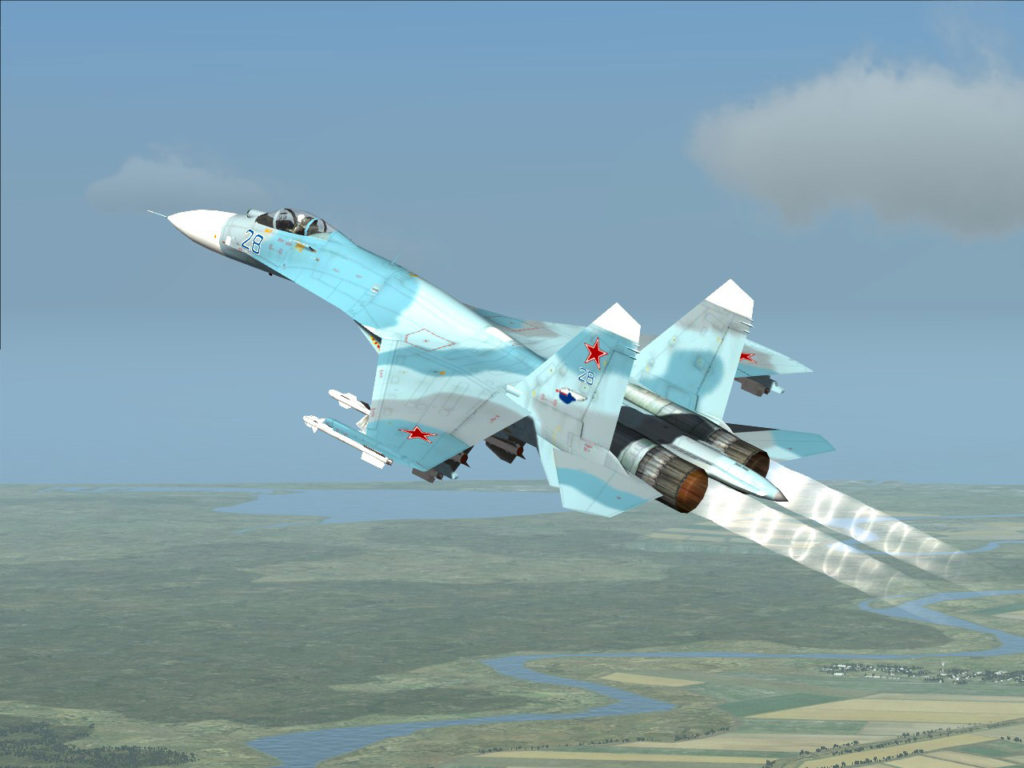
Su-27 Flanker Combat Record
The Sukhoi Su-27 Flanker, introduced in the 1980s, has been a cornerstone of air defense for several nations. Designed as an air superiority fighter, it has participated in various conflicts, achieving notable air-to-air victories and engaging in air-to-ground operations.
Air-to-Air Engagements:
Ethiopia-Eritrea War (1999-2000): Ethiopian Su-27s were instrumental during this conflict, securing multiple aerial victories:
February 1999: Two Eritrean MiG-29s were shot down, and another was damaged by Ethiopian Su-27s.
May 2000: Ethiopian pilots downed two additional Eritrean MiG-29s.
Russo-Ukrainian War (2022-Present): Both Russian and Ukrainian Su-27s have been active:
February 24, 2022: A Ukrainian Su-27 was destroyed during a Russian attack on Ozerne Air Base.
February 25, 2022: Another Ukrainian Su-27 was downed over Kyiv by a Russian S-400 system; the pilot, Colonel Oleksandr Oksanchenko, was killed.
May 7, 2022: Ukrainian Su-27s conducted a low-level bombing run on Russian-occupied Snake Island.
May 17, 2024: A Ukrainian Su-27 was shot down near Metalivka, resulting in the death of Lt. Col. Denys Vasyliuk.
Air-to-Ground Operations:
Ethiopian Civil Conflict (2020s): Ethiopian Su-27s have been employed in air-to-ground roles, notably during the Tigray War, where they conducted bombing missions over Mekelle using OFAB-250 unguided bombs.
Russo-Ukrainian War:
May 7, 2022: Ukrainian Su-27s executed a bombing raid on Snake Island, targeting Russian positions.
August 2023: Reports indicated that Ukrainian Su-27s were equipped with American-made AGM-88 HARM anti-radiation missiles and JDAM-ER guided bombs, enhancing their air-to-ground capabilities.
In summary, the Su-27 has demonstrated versatility in both air-to-air and air-to-ground missions across various conflicts. Its performance has been influenced by factors such as pilot training, mission planning, and the evolving dynamics of modern warfare.
Performance:
- Top Speed: Mach 2.35
- Outstanding energy retention and high thrust-to-weight ratio (~1.15 when lightly loaded)
- High angle-of-attack (AoA) capability for superior maneuverability
- Large internal fuel capacity for extended range
BFM Employment: The Su-27 is a high-energy fighter that thrives in one-circle engagements, where its excellent instantaneous turn rate and high AoA control allow it to quickly point its nose at the enemy. However, its large airframe and high drag make it less effective in sustained turning fights, where it can be outperformed by smaller, more efficient aircraft.
Flying Tips:
- Use high-AoA maneuvers to force overshoots and gain positional advantage in a one-circle fight.
- Avoid prolonged sustained turns, as its energy bleed is higher than aircraft like the F-16C or MiG-29.
- Leverage its thrust-to-weight ratio to engage in vertical maneuvers, maintaining energy advantage over opponents.
The Su-27 Flanker remains one of the most agile and powerful air superiority fighters in DCS World, excelling in high-energy dogfights and long-range missile engagements.
| Weapon | Type | Range (Publicly Disclosed) |
|---|---|---|
| Short-Range Air-to-Air Missiles (WVR) | ||
| R-60M | IR-guided (heat-seeking) | ~6.5 nm (12 km) |
| R-73 | IR-guided (high off-boresight) | ~12 nm (22 km) |
| Medium-Range Air-to-Air Missiles (BVR) | ||
| R-27R | Semi-active radar-guided | ~38 nm (70 km) |
| R-27ER | Extended-range SARH | ~60–70 nm (110–130 km) |
| R-77 | Active radar-guided (ARH) | ~50 nm (93 km) |
| Long-Range Air-to-Air Missiles (Not Available in DCS) | ||
| R-37M* | Active radar-guided (ARH) | ~100-200 nm (185-370 km) (Not in DCS) |
Notes for the Su-27:
- The Su-27 has a mix of SARH and active radar-guided missiles, with the R-77 (similar to the AIM-120 in Western aircraft) being the most advanced option for beyond-visual-range (BVR) engagements.
- R-37M is a very long-range missile used by the MiG-31, but it’s not available in DCS for the Su-27. This missile is capable of extremely long-range engagements.
- The GSh-30-1 30mm cannon is available for close-range dogfights.
Fourth / 4.5 Generation Aircraft Performance – Comparison Table.
Here is the updated Performance Comparison Table, now including the F-15C Eagle and F-14 Tomcat:
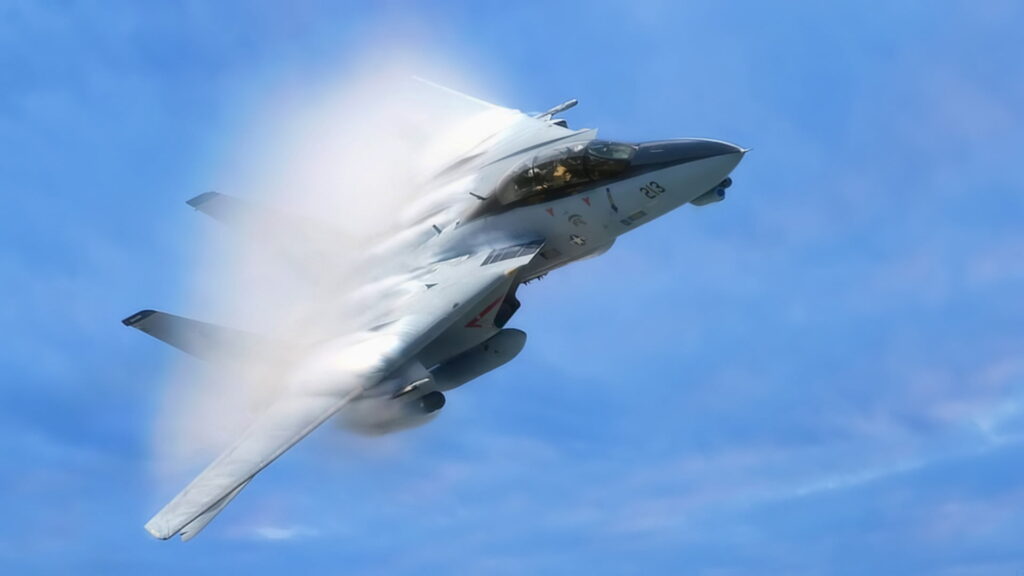
This table allows you to see a basic best case performance of all the aircraft listed in this blog. As with all performance tables it will vary wildly depending on loadout speed and altitude so these are likely the best case scenario with minimal weapons, Low fuel load and minimal altitude.
DCS World will be able to help you determine your best strategy for you chosen fourth generation fighter when you head into virtual combat.
| Aircraft | Max Speed (Mach) | Instantaneous Turn Rate (°/s) | Sustained Turn Rate (°/s) | Best Instantaneous Turn Speed (knots) | Best Sustained Turn Speed (knots) |
|---|---|---|---|---|---|
| F-15C Eagle | 2.5 | ~26 | ~21 | ~350-420 | ~450-500 |
| F-14 Tomcat | 2.34 | ~25 | ~18 | ~300-380 | ~380-420 |
| F-16C Viper | 2.05 | ~26 | ~21 | ~330-420 | ~440-480 |
| F/A-18C Hornet | 1.8 | ~24 | ~19 | ~280-350 | ~380-420 |
| MiG-29 Fulcrum | 2.25 | ~28 | ~22 | ~320-380 | ~450-500 |
| Su-27 Flanker | 2.35 | ~27 | ~21 | ~300-370 | ~420-470 |
| Mirage 2000C | 2.2 | ~30 | ~20 | ~290-360 | ~410-450 |
| Eurofighter Typhoon | 2.0 | ~30 | ~24 | ~320-390 | ~450-500 |
This performance chart provides a direct comparison of all 4th generation fighters in DCS World, ensuring you have the best guide available to compare and determine strategy.
RED AIR vs BLUE AIR TACTICS – What’s Different about Philosophies?
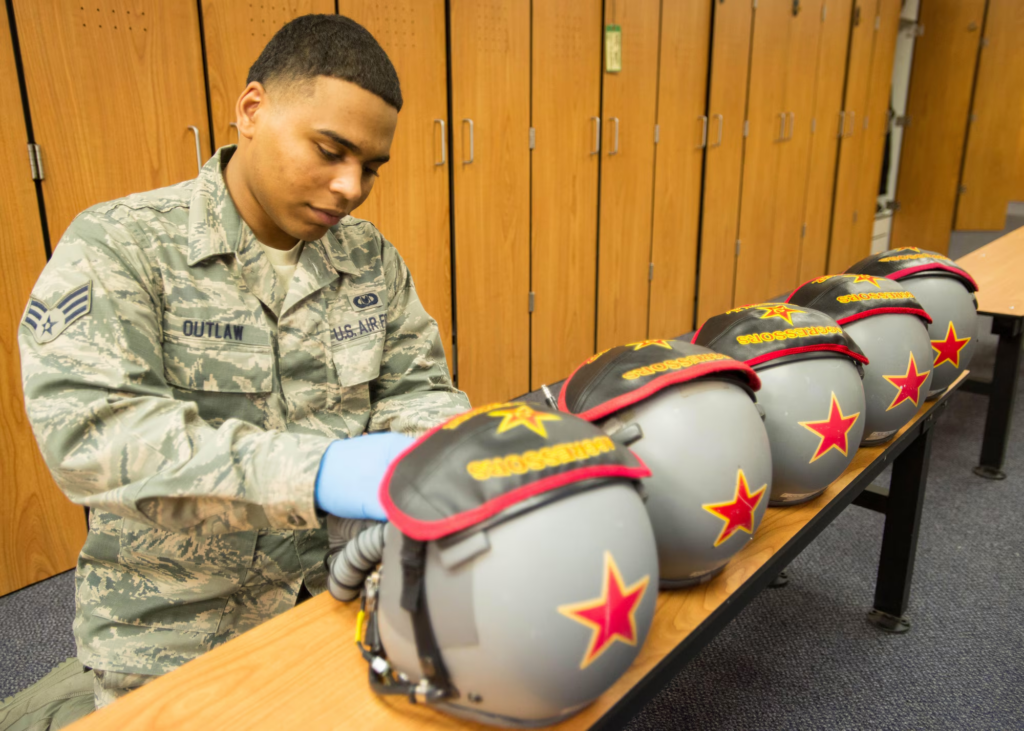
NATO vs. Russian (Eastern) Air Combat Tactics: A General Comparison
Air combat tactics have historically differed between NATO and Russian (Eastern) doctrine, largely due to differing strategic philosophies, technological developments, and operational constraints. Below is a very broad comparison of the two approaches.
Mission Planning and Execution
NATO Approach: Pilot-Centric, Flexible, and Decentralized
- NATO air forces emphasize mission autonomy for pilots. While detailed planning occurs before a sortie, pilots are expected to adapt and make real-time decisions based on situational awareness and changing threats.
- Western doctrine incorporates “Mission Command”, allowing flight leads to adjust execution mid-flight without needing direct orders from command.
- Modern data fusion and networking (Link-16, MADL, etc.) allow pilots to share real-time battlefield information, increasing situational awareness.
- Tactical briefs and debriefs are extensive, focusing on learning and refinement of air combat skills.
Russian/Eastern Approach: Ground-Controlled, Structured, and Hierarchical
- Traditionally, Russian doctrine has placed heavy reliance on ground-based controllers (GCI – Ground-Controlled Intercept) to direct fighters toward threats.
- Fighter pilots are trained to follow pre-set tactics and engagement procedures, with less emphasis on individual decision-making.
- Historically, less real-time data was available to pilots due to limited onboard situational awareness tools and a preference for ground-based radar coverage.
- Post-Soviet Russian forces have begun to modernize tactics, but the reliance on centralized command remains prevalent.
Beyond Visual Range (BVR) Combat
NATO: First-Look, First-Kill Doctrine
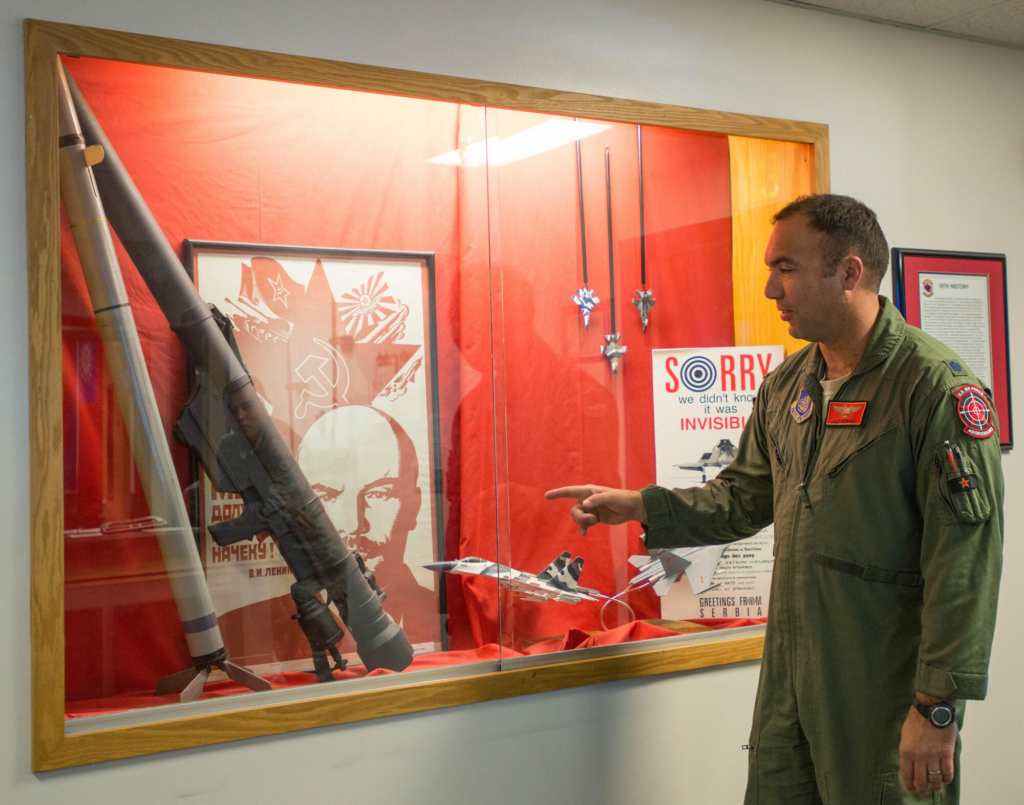
- NATO fighters prioritize radar superiority and BVR missile engagements (e.g., AIM-120 AMRAAM, Meteor).
- Superior AWACS integration (E-3 Sentry, E-2 Hawkeye) provides early threat detection.
- Emphasis is on stealth and electronic warfare to reduce enemy detection and increase survivability.
Russia: Saturation and Defense-in-Depth
- Russian doctrine incorporates layered air defense, with fighters working alongside long-range SAM systems (e.g., S-400, S-500).
- Aircraft like the MiG-31 are optimized for high-speed, long-range intercepts, using weapons like the R-37M (RVV-BD).
- Fighters often employ multiple missile salvos (e.g., R-77-1, R-27ER) to overwhelm defences.
- Use of jammers and decoys is integral to disrupting enemy missile locks.
Within Visual Range (WVR) Combat
NATO: Energy and Maneuverability
- NATO pilots are trained extensively in Basic Fighter Manoeuvres (BFM), focusing on one-circle vs. two-circle fights and energy management.
- Aircraft like the F-16, F/A-18, and Eurofighter emphasize high-sustained turn rates and agility.
- Western fighters use high off-boresight missiles (AIM-9X, ASRAAM) paired with helmet-mounted sights (HMDs) for quick targeting.
Russia: High-Angle-of-Attack and Supermaneuverability
- Russian fighters (e.g., Su-27, Su-35, MiG-29) prioritize high AoA performance and post-stall manoeuvring.
- Supermanoeuvrability tactics (e.g., Cobra manoeuvre, Kulbit) are designed to evade missiles and gain nose authority.
- Aircraft are equipped with high off-boresight missiles (R-73, R-74) and HMS (Helmet-Mounted Sights) for quick snap shots in dogfights.
Training and Pilot Proficiency
NATO: Professional, Career-Based Pilot Corps
- NATO pilots typically undergo extensive, long-term flight training and often remain in service for decades.
- Frequent multinational exercises (Red Flag, Top Gun, Air Defender, etc.) simulate real-world engagements.
- High sortie rates and advanced simulators ensure pilots are highly experienced.
Russia: Shorter Pilot Training, Less Flight Hours
- Russian pilots historically receive fewer flight hours per year (~100-150 vs. NATO’s 200-300+).
- Training is often rigid and doctrine-based, with less emphasis on dynamic, real-world scenarios.
- Elite squadrons (e.g., VVS Air Force Regiments, Russian Navy Fighters) receive better training, but overall pilot proficiency varies.
Tactical Wrap-up
- NATO tactics emphasize flexibility, pilot autonomy, and advanced technology, focusing on stealth, networking, and situational awareness.
- Russian doctrine relies on centralized control, robust defensive layers, and supermanoeuvrability, prioritizing ground-based coordination and aggressive missile employment.
- While modernization efforts are shifting Russian tactics toward more network-centric warfare, NATO continues to maintain an edge in combat experience, pilot training, and force integration.
NATO vs. Russian (Eastern) Air Combat Tactics: Summary Table
| Category | NATO (Western Doctrine) | Russia (Eastern Doctrine) |
|---|---|---|
| Mission Planning | Pilot-driven, flexible, decentralized execution | Ground-controlled, structured, hierarchical |
| Situational Awareness | High, due to AWACS, Link-16, advanced avionics | Moderate, relies on GCI and ground-based radars |
| Command & Control | Mission command, flight leads adjust tactics dynamically | Centralized control, pilots follow directives from GCI |
| Beyond Visual Range (BVR) | Stealth, first-look first-kill with AMRAAM, Meteor | Saturation tactics, R-77/R-27 with SAM integration |
| Within Visual Range (WVR) | Energy management, sustained turn rate, AIM-9X, ASRAAM | Supermaneuverability, high AoA, R-73 with helmet sights |
| Missile Doctrine | Precision, networked targeting, minimal missile waste | Mass salvo launches, overwhelm enemy defenses |
| Pilot Training | Career-based, extensive training, 200-300+ flight hours/year | Varies, typically 100-150 flight hours/year |
| Dogfighting Focus | One-circle/two-circle BFM, energy retention | Extreme nose-pointing, post-stall maneuvers |
| Force Integration | Joint operations with air, land, and sea forces | Heavy reliance on integrated air defense networks |
| Electronic Warfare | Advanced ECM, radar jamming, cyber warfare | ECM and decoys, but less integrated compared to NATO |
| Sortie Rate | High, efficient logistics, continuous pilot rotations | Lower, due to maintenance constraints and supply issues |
This table provides a quick-reference comparison of Western vs. Eastern air combat philosophies.
DCS World 4th Generation Fighters – FAQ
Q: What is the best 4th generation fighter in DCS World?
A: There is no single “best” fighter — the F-16C Viper is excellent for multirole flexibility, the F-14 Tomcat dominates in BVR teamwork with the RIO, the MiG-29 excels at close-range dogfighting, while the F-15C Eagle offers unmatched speed and long-range missiles. The best choice depends on your mission and playstyle.
Q: What is the difference between 4th and 4.5 generation fighters in DCS?
A: 4th generation fighters like the F-14, F-15, F-16, MiG-29, and Su-27 rely on radar, missiles, and aerodynamic performance. 4.5 generation jets, like the Eurofighter Typhoon, integrate more advanced avionics, datalinks, and sensors, giving them improved situational awareness and multirole capabilities.
Q: Which DCS fighter is easiest for beginners?
A: The F-15C Eagle (Flaming Cliffs module) is the most beginner-friendly due to its simplified avionics, strong radar, and powerful missile loadout. The F-16C Viper is another good option thanks to its modern cockpit systems and versatility.
Q: What is the hardest DCS fighter to master?
A: The F-14 Tomcat is often considered the most challenging because of its two-seat design, reliance on the RIO for radar management, and its heavy handling characteristics. However, many players find it the most rewarding once mastered.
Q: Can I dogfight with the Eurofighter Typhoon in DCS?
A: Yes. While the Eurofighter is designed for BVR combat with advanced missiles, its powerful engines and high agility make it extremely effective in close-range dogfights compared to older 4th gen jets.
Conclusion
DCS World offers an unparalleled experience for virtual pilots looking to master 4th Generation Fighters in DCS World with the help of this comprehensive analysis of available 4th generation fighter jets.
Whether you’re flying the nimble F-16, the well-balanced F/A-18, or the powerful Su-27 or Mig-29, understanding their strengths and weaknesses in BFM is crucial to gaining an edge in combat.
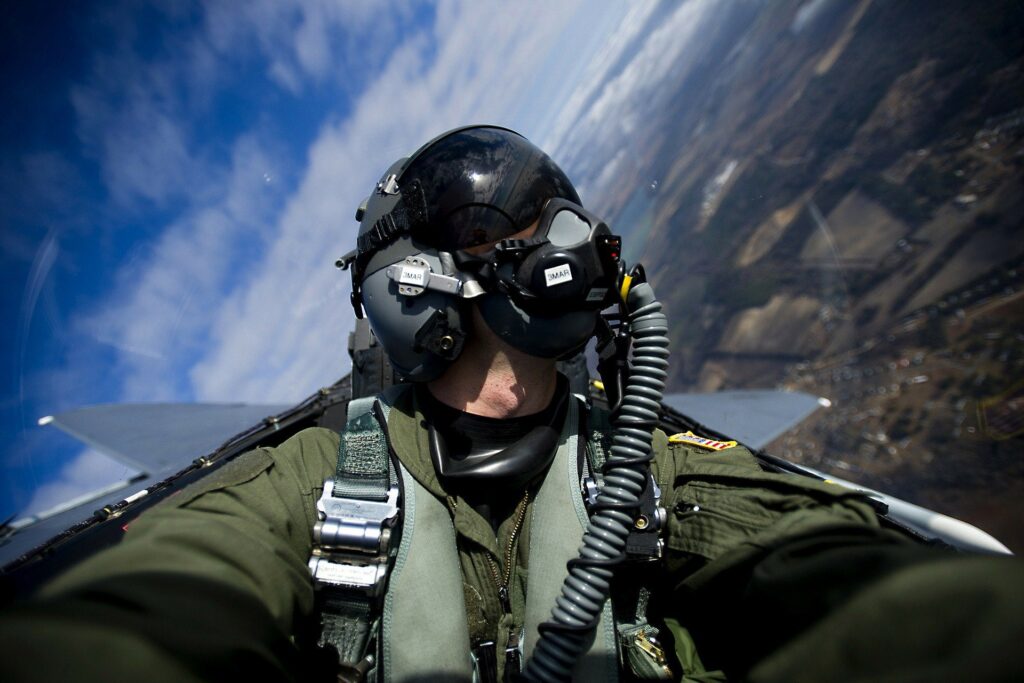
With the anticipated arrival of the Eurofighter Typhoon, the roster of high-fidelity fighters will continue to expand, offering even more strategic opportunities for DCS players.
The 4th generation fighters in DCS World each have distinct strengths and optimal tactics. The F-16C dominates in two-circle fights, while the F/A-18C excels in one-circle engagements.

The MiG-29, with its powerful engines and high instantaneous turn rate, is best used in short, aggressive engagements. The upcoming Eurofighter Typhoon is expected to be a versatile and highly manoeuvrable addition to the roster.
It superior power and pilot reports suggest it doesn’t care and will One or Two circle with the best available ATM as well as doing extremely well against 5th Generation fighters like the F-22 Raptor.
Mastering energy management, turn rates, and strategic BFM choices is key to maximizing each aircraft’s combat potential. By understanding how these aircraft perform in various dogfighting scenarios and making tactical decisions accordingly, pilots can gain a decisive edge in combat.
Stay tuned for future updates and new aircraft additions!
Author
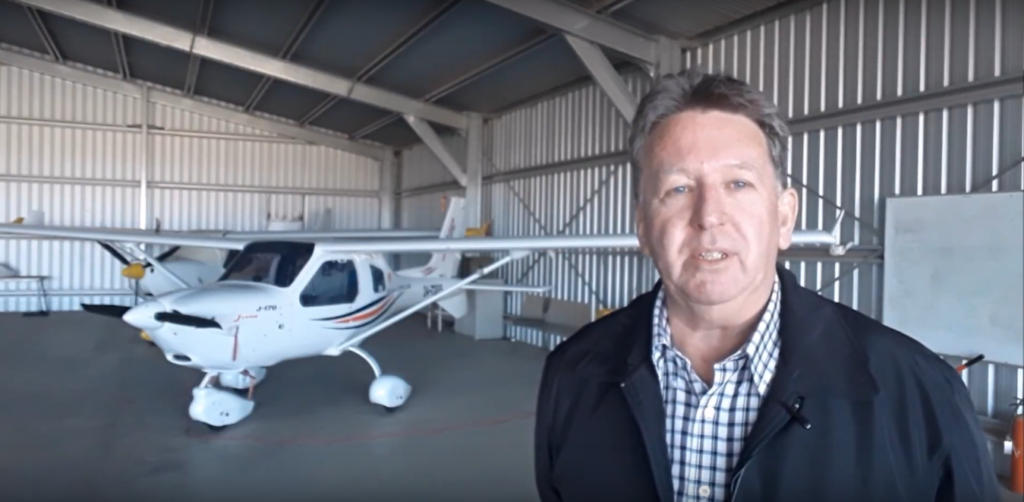
Brendon McAliece (Aka Gunnie) is a military veteran with 23 years working on Jet Fighters, their weapons systems and ejection seat/module systems as well as munitions and R&D. Involved with flight simulation since the 1980s, he has flown all the major flight simulators over the years.
He is an Australian expat who has lived in Malaysia, UK, Saudi Arabia and more recently Thailand. He is a multi-lingual blogger who loves to share his life experiences here on LetsFlyVFR.com and DreamingGuitar.com, with his lifestyle and Travel experiences Blog plus his Dreaming Coffee website.
Learn More @
DreamingGuitar.com – DreamingCoffee.com – LetsFlyVFR.com
( HOME – BLOG – SHOP – ABOUT )
As an Amazon affiliate I may benefit from qualifying sales.
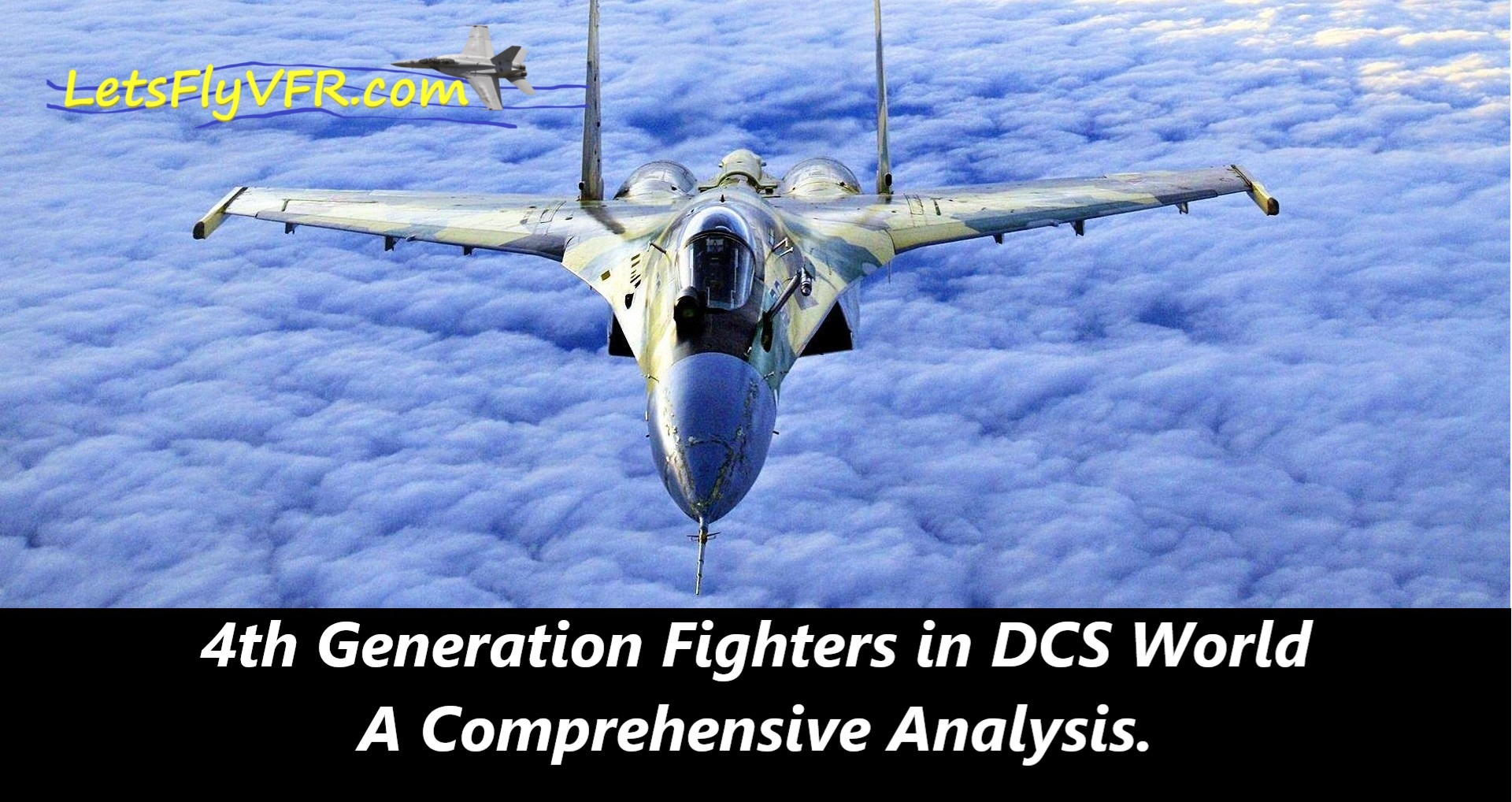
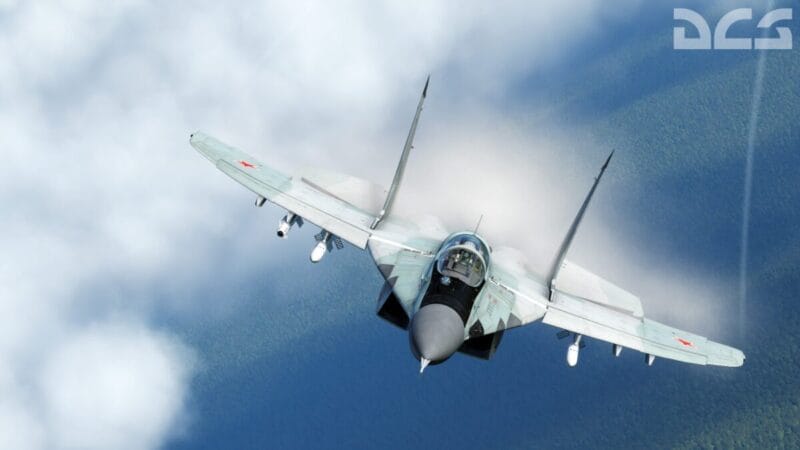
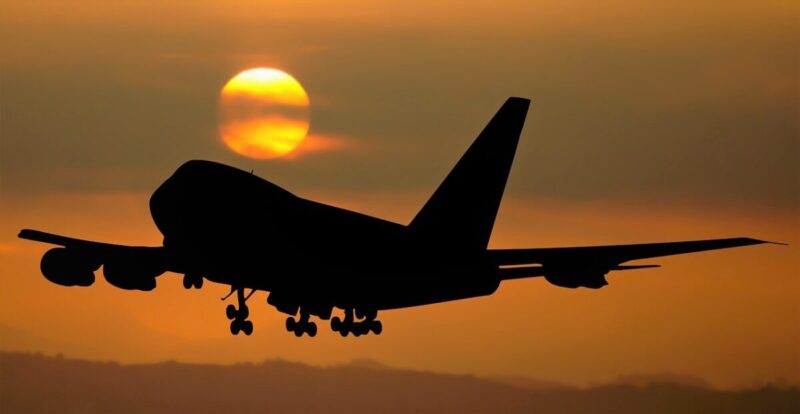
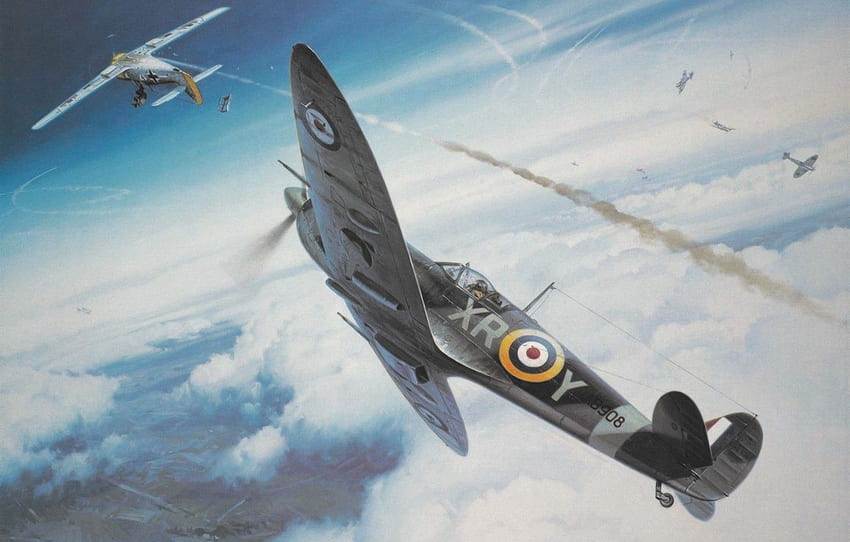

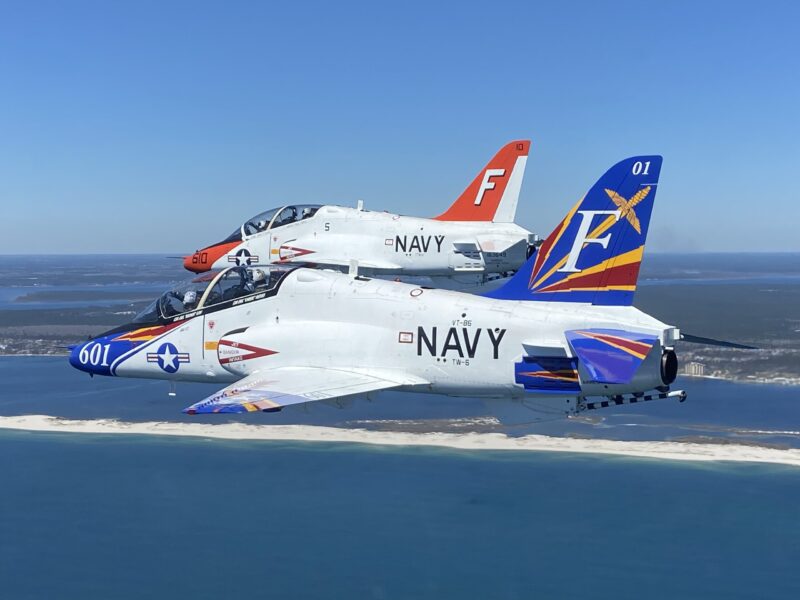

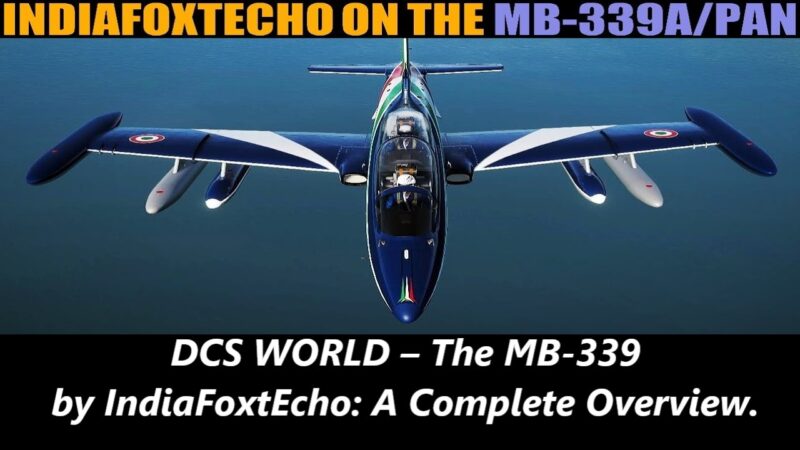


One response to “4th Generation Fighters in DCS World A Comprehensive Analysis.”